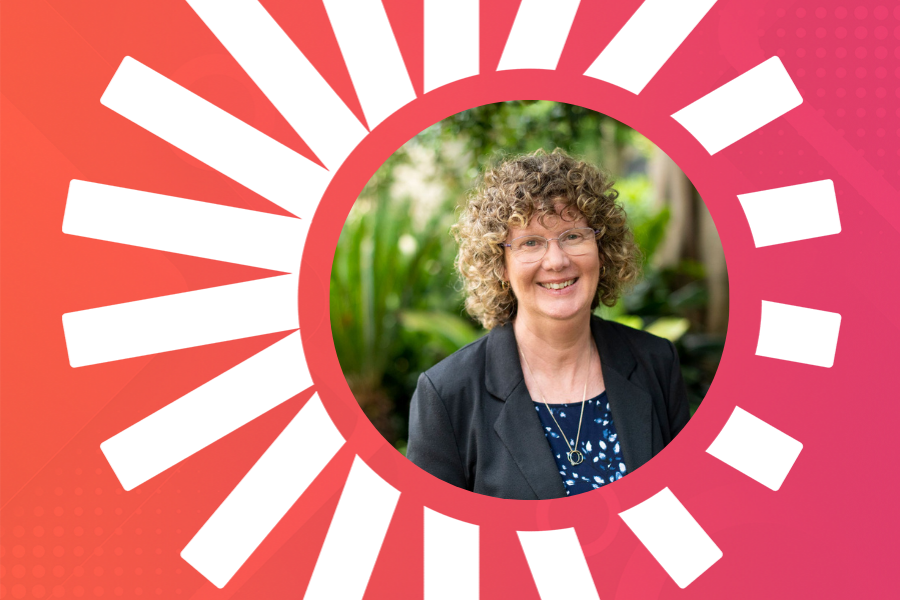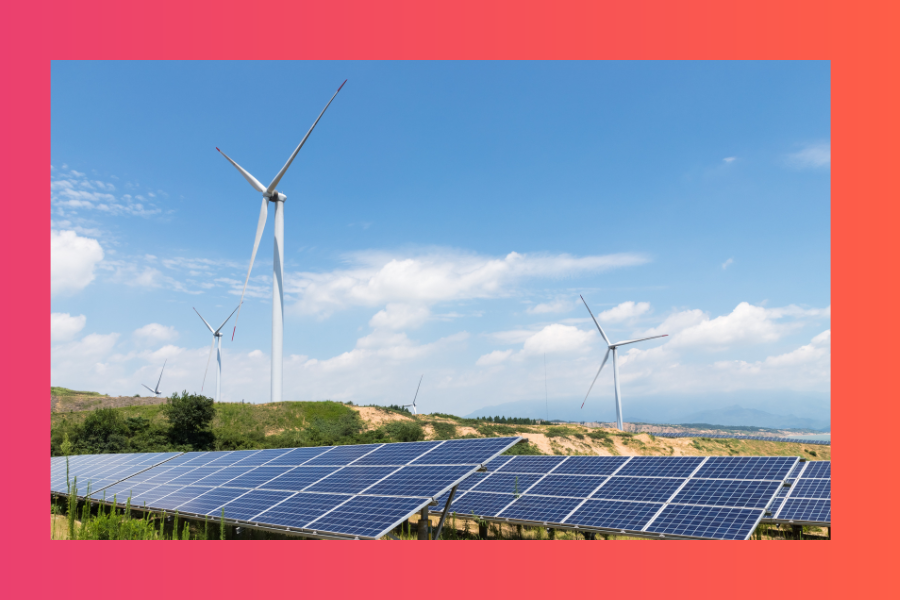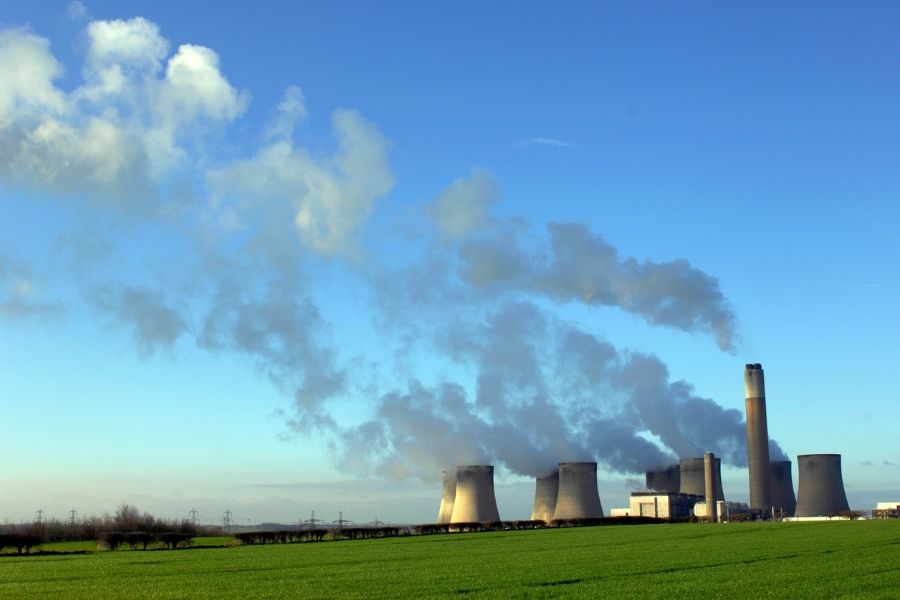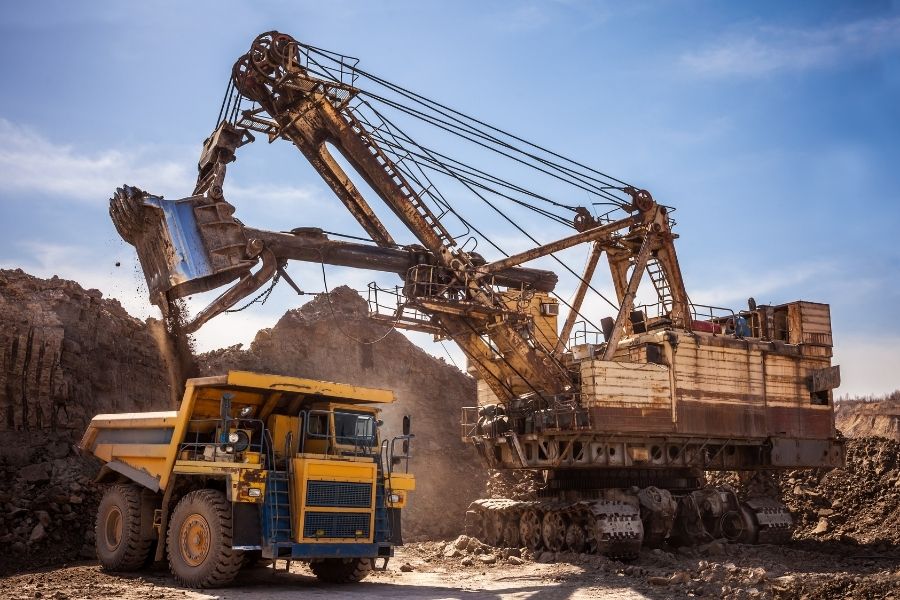
Q&A with Professor Michelle Leishman: The Importance of Green Cities, Renewable Energy, and Native Vegetation to Australia’s Future
Professor Michelle Leishman is a Distinguished Professor in the School of Natural Sciences, at Macquarie University. Michelle is an ecologist of international renown who works in the fields of plant invasion biology, climate change impacts and adaptation, plant conservation, and urban ecology. Michelle has more than 170 published book chapters and journal articles, and much of her research has been converted into on-ground action and policy advice for practitioners and government, including the development of widely used online tools for plant species selection and climate change adaptation. Her current research focus aims to facilitate resilient and diverse green urban spaces, and she leads the Which Plant Where project.
Michelle is the recipient of the NSW Royal Society 2020 Clarke Medal, in the field of Botany and is named as the Journal of Ecology’s 2021 Eminent Ecologist. She is also a Trustee of the Royal Botanic Gardens and Domain Trust, and Chair of the Australian Institute of Botanical Science Advisory Council. Additionally, she is on the NSW Greening our City Panel, the Board of Bush Heritage Australia, and is an elected council member of the Australian Flora Foundation.
Kylie Browne of the Solar Trust Centre spoke with Michelle about what makes a great green city, the importance of renewable energy in creating cleaner and greener communities, and what resources are available to those looking to grow their awareness of native vegetation in Australia.
1. Thank you for your time, Michelle. To start, can you tell our readers a little about what exactly led you to working in your current endeavours?
I'm a plant ecologist and I've been working on the impacts of climate change on native vegetation and plant species for many years now, mainly in non-urban areas. But it's becoming increasingly apparent that what's going on in our cities is important. The world is becoming more urbanised, due to population increase, as well as a shift to urban areas. Consequently, I have shifted my focus over the last few years to understanding the impacts of climate change on our cities, and what we can do about that in terms of adaptation. Addressing the big global challenges has always been my interest, and urbanisation and climate change are two of those massive global challenges, plus of course energy transition.
2. What you are looking to advance in your career is clearly commendable. Looking beyond the big picture of nationwide advances and into minor details, if we boil it down to the grassroots, can you provide an illustration for us of what a great home or street in a green city would look like?
Urban green spaces provide a whole lot of what we call ‘ecosystem services’. So in a well-designed precinct - or even at the individual street level - the more green space that we have, the more of those ecosystem services, or benefits, are provided. Those benefits include urban cooling because plants provide shade, and they also work as an evaporative cooler, because they're pumping water up through their system and into the atmosphere. That improves people’s thermal comfort, as well as reduces energy costs in summer. Green spaces provide a huge benefit in terms of stormwater management, because plants intercept rainfall, and help it infiltrate into the soil. That means less intensive flooding in areas with a green canopy.
Urban green spaces also provide benefits in terms of increases in water quality and air quality, so the greener the space you're living in the cleaner the air is, as well as our waterways having less contamination. And of course, urban green spaces are providing habitat for biodiversity. So a good, well-designed green space will be providing biodiversity benefits and supporting native animals. All of these benefits together contribute to the liveability of the city. And we know that where there's a larger proportion of urban green spaces, people generally have better physical health. They're out and about, they can walk around their neighbourhood, they can exercise in the park. This provides all of these mental health benefits as well. We saw that, particularly during the Covid-19 lockdown period when people realised how important access to green space was for their physical and mental health.
And amazingly, we even find that the more diverse the plants are in an environment, the more diverse the microbes are in the environment, and that helps our immune systems. So there's all of these amazing things we're finding out about urban green space and the benefits that it provides. To your question specifically, what would a great home or street in a green city look like? A good precinct or street in a green city would have a diversity of plants in a diversity of types of green space - gardens, parks, street trees - that are connected, accessible, and well-designed, to provide those ecosystems benefits.
3. One can just imagine how beautiful that would be. As you were saying that I was like, "Wow, imagine living in a place like that." We really need to do a lot more than what we're doing, don't we?
Yes, and there's much more that we can do. It's not rocket science, really. There are all sorts of clever ways that we can design our buildings incorporating water-sensitive urban design, biodiversity-sensitive urban design, and energy management. Getting that right means that our lives can be much better.
4. When we look at the quest to build smart cities in Australia, what has been the greatest challenge in your mind in making progress in this area?
A lot of the smart city work has so far been about transport and mobility. At the same time, in parallel, we are focusing on green spaces and their importance. But the connection between the two - the smart and the green - really hasn't happened. I see that there are lots of opportunities there, in terms of how we manage our green space and its assets using smart technology, which really hasn't taken off yet. It's hard to know why it hasn't, it seems like an obvious gap to me. But one of the challenges is the integration of the data. When you're pulling data together from many different sources, such as environmental sensors of soil, water, and trees, as well as remote sensing and other big data sources, it's the integration, analysis and interpretation that's the current technological challenge. In essence, how can we best integrate, analyse and visualise the data to support good decision-making in urban environments?
5. For STC, our passion for renewable energy is alongside that of sustainability, so we really have to ask a question surrounding it here! In what ways can renewable energy like solar power aid in the endeavours to which you've devoted your professional life to?
I'd think about that in terms of the energy transitions that we're going through, that are essential for the planet. Energy transitions include the transition to renewables and also how we can mitigate and adapt to climate change in the meantime. Also, vegetation, in our cities and elsewhere, is an important part of that. How do we manage our cities to ensure that we have integrated energy management, where green space is part of energy use reduction but does not conflict with energy production via shading of PV on our roofs? How do we design our cities so that our waterways (the blue infrastructure) contribute to urban cooling and energy management? How can we maximise carbon uptake and retention in our green spaces to mitigate climate change?
6. We've just come off a significant federal election, where climate change was clearly a major contributor to the outcomes in many seats. What do you think that tells us about where Australians are collectively in 2022, and their position on climate change and sustainability?
I think it's very clear that there's been a significant shift in the mood in Australia, that we have left behind the climate wars, I hope, and have a much more sophisticated attitude to climate, and a much more keen understanding of why we need to be on the road to energy transitions, and quickly. I think the election has shown us that it's across the board. It's not just young people, or it's not limited to people in a particular electorate. Instead, there's now a real desire for us to be part of the global movement, and not be seen as pariahs in the global community anymore.
And I think that is a great thing. I'm very excited, and there's so much opportunity. Part of the shift in attitude is that it's not bad news about needing to shift to renewables, but it's about the opportunities that energy transitions are providing, and Australia's in a great place to take advantage of that. We've been talking about this for a long time, about the opportunities, and now the general population is seeing them and the politicians are getting on board, so that's great.
7. A lot of work remains to be done getting to where we want to go in terms of climate change resilience and adaptation in Australia, yet let's look to move towards a conclusion here on a positive note with our penultimate question. What does an ideal Michelle Leishman vision for Australia look like in 2030, 2040, and 2050 as it pertains to our relationship with the environment?
I'd like to see us be in 2030, 2040, 2050, a sophisticated nation that has transitioned to 100% renewable energy. That our city design is focused on being sustainable, nature-positive and creating an urban environment where people want to live. That provision of quality green space that delivers multiple benefits is recognised as key to good urban life. That we have sophisticated decision-making tools that incorporate the values and benefits of different urban designs, and that nature-based solutions are the first place we look to for overcoming the challenges of high-density urban living. Lastly, I’d like Australian cities to reflect the incredible biodiversity and indigenous heritage of the places they are situated.
8. Finally, for those among our readers inspired by the work that you do and keen to engage with it further, what action could they take today to learn more about it and support it?
If people are interested in climate change and understanding the impact of climate change and the opportunities, then the Climate Council website is a really great place to start. I'm a plant ecologist, so plants are of course my focus. If people are interested in understanding which plants are most suitable for their area amidst climate change, then I'd recommend the Which Plant Where website, which is a website that we developed, which has all sorts of resources and information about creating fabulous urban green spaces.
If you are mindful of the sorts of plant species that you put in your gardens, and you want to make sure that you are not planting something that will jump the garden fence and invade your local bushland, then the Gardening Responsibly Plant Sure website can be a very helpful resource. It can help ensure you can feel comfortable that you are putting plants in your garden that are low risk to native biodiversity. People can also look at our Center for Smart Green Cities website - lots of resources and media can be found there too.
STC thanks Michelle for her time.
Further info regarding her work can be found here.
Read more related blogs

Comparing Australia and the UK in Going Green
A comparison between Australia and the United Kingdom when it comes to solar power may appear an unusual endeavour at first glance. After all, while...


